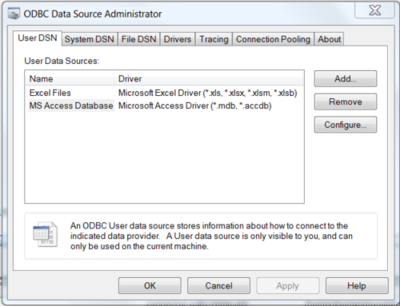


- Using odbc excel source in ssrs how to#
- Using odbc excel source in ssrs 32 bit#
- Using odbc excel source in ssrs code#
Q1: Do we need to have to have Excel installed on the server? I am aware of the two ODBC executables:Ĭ:\Windows\System32\odbcad32.exe and c:\Windows\SysWOW64\odbcad32.exe, to Our two versions of Excel (20) are both 32-bit versions.
Using odbc excel source in ssrs 32 bit#
They are able to use SQL Server data sources with report Builder without a problem.įrom what I can read so far, Report Builder is a 32 bit app. The end users will be using Report Builder. I believe the sticking point is related to 32-bit
Using odbc excel source in ssrs how to#
Before I start posting error messages I thought I would ask some general questions about how to set this up.

Using odbc excel source in ssrs code#
Having done this, when you connect to the same DimDate table, you’ll see that now the Power Query Editor is only requesting the top 1000 rows from the table:Īlso, if you look at the M code for the query, the Odbc.DataSource function has the as-yet undocumented SqlCapabilities option set in its second parameter, If you don’t know which one to choose you can click the Detect button and it will select one for you. As the screenshot above shows, there are four values in the dropdown that relate to the form of SQL supported by your ODBC source to only get the first N rows from a table. Now let’s see what happens if you do select something from the “Supported row reduction clauses” dropdown. What’s more, as this blog post shows, the Power Query Editor only actually wants to display 1000 rows and the fact that the query is requesting all the rows from the table suggests that even basic query folding is not happening on this ODBC data source. Obviously, if you are connecting to a big table this could make the Power Query Editor slow. However, if you look in Profiler when the contents of the Preview window is refreshed, you’ll see that the Power Query engine is running a query that gets the entire contents of the table:


 0 kommentar(er)
0 kommentar(er)
